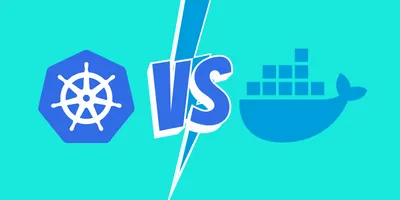# Docker vs Kubernetes: Container Security Best Practices
Containerization technology has revolutionized the way applications are developed, deployed, and managed. Two of the most popular containerization platforms are Docker and Kubernetes (K8s). While both offer significant benefits, they differ in their architecture, functionalities, and security considerations. This article aims to provide a comparative analysis of Docker and Kubernetes in terms of container security best practices.
Table of Contents
- Introduction
- Docker Security Overview
- Kubernetes Security Overview
- Security Comparison
4.1. Image Security
4.2. Runtime Security
4.3. Network Security
4.4. Data Security
4.5. Identity and Access Management - Best Practices for Docker
- Best Practices for Kubernetes
- Conclusion
Introduction
Containerization technology has democratized application development and deployment by enabling developers to package applications with all their dependencies in a lightweight, portable, and self-contained format. This has led to a shift towards DevOps and CI/CD pipelines. Among various containerization platforms, Docker and Kubernetes have emerged as the most popular ones.
While both platforms offer benefits such as portability, scalability, and improved resource utilization, they differ in their architecture, functionalities, and security considerations. This article aims to provide a comparative analysis of Docker and Kubernetes in terms of container security best practices.
Docker Security Overview
Docker provides a lightweight, open-source containerization platform for developing, shipping, and running applications. Docker containers share the host’s kernel, which can pose security risks if not properly managed.
Key Security Considerations
- Image Security: Docker images can contain vulnerabilities that can be exploited by attackers.
- Runtime Security: Docker containers run with the same privileges as the host, making them susceptible to security threats.
- Network Security: Docker networks can be vulnerable if not properly configured.
- Data Security: Data stored within Docker containers can be at risk if not properly secured.
- Identity and Access Management: Docker lacks built-in mechanisms for user authentication and authorization.
Kubernetes Security Overview
Kubernetes is an open-source container orchestration platform that automates deployment, scaling, and management of containerized applications. Kubernetes provides a platform-agnostic environment for deploying and managing containerized applications at scale.
Key Security Considerations
- Image Security: Kubernetes relies on Docker images, and thus inherits the same image security concerns as Docker.
- Runtime Security: Kubernetes provides better isolation and less privileged access to containers, reducing runtime security risks.
- Network Security: Kubernetes provides a more fine-grained network policy management compared to Docker.
- Data Security: Kubernetes provides various mechanisms for securing data within containers, such as Persistent Volumes and Secrets.
- Identity and Access Management: Kubernetes provides built-in mechanisms for user authentication and authorization through Kubernetes Service Accounts and Role-Based Access Control (RBAC).
Security Comparison
| Security Consideration | Docker | Kubernetes |
|---|---|---|
| Image Security | Vulnerable if not properly managed | Inherits the same image security concerns as Docker |
| Runtime Security | Runs with the same privileges as the host | Provides better isolation and less privileged access |
| Network Security | Basic network policies | More fine-grained network policy management |
| Data Security | Data stored within containers can be at risk | Provides mechanisms for securing data within containers |
| Identity & Access Management | Lacks built-in mechanisms | Provides built-in mechanisms for authentication and authorization |
Image Security
Both Docker and Kubernetes rely on secure Docker images. It is crucial to ensure that images are built with security best practices in mind, such as minimizing the number of packages, keeping packages up-to-date, and using multi-stage builds.
Runtime Security
Docker containers run with the same privileges as the host, making them susceptible to security threats. In contrast, Kubernetes provides better isolation and less privileged access to containers, reducing runtime security risks.
Network Security
Docker networks can be vulnerable if not properly configured. Kubernetes provides a more fine-grained network policy management, allowing administrators to control network traffic between containers and pods at a granular level.
Data Security
Data stored within Docker containers can be at risk if not properly secured. Kubernetes provides various mechanisms for securing data within containers, such as Persistent Volumes and Secrets.
Identity and Access Management
Docker lacks built-in mechanisms for user authentication and authorization. Kubernetes provides built-in mechanisms for user authentication and authorization through Kubernetes Service Accounts and Role-Based Access Control (RBAC).
Best Practices for Docker
- Use multi-stage builds to minimize the attack surface of your images.
- Keep your base images up-to-date and minimize the number of packages installed.
- Use Docker Content Trust (DCT) to verify the integrity of your images.
- Limit the capabilities of your containers to the minimum required.
- Implement a container runtime security solution like seccomp filters and Linux capabilities.
Best Practices for Kubernetes
- Use hardened base images with minimal packages installed.
- Implement least privilege principles by using Pod Security Policies.
- Enable network policy management to control network traffic between containers and pods.
- Use Kubernetes Service Accounts and RBAC for user authentication and authorization.
- Implement a web application firewall (WAF) to protect your applications against common web attacks.
Conclusion
While both Docker and Kubernetes offer containerization solutions, they differ in their architecture, functionalities, and security considerations. Understanding these differences is crucial for making informed decisions when choosing between the two platforms. By following best practices for image, runtime, network, data, and identity and access management, organizations can secure their containerized applications effectively.
Ultimately, the choice between Docker and Kubernetes depends on the specific needs and requirements of your organization. Both platforms provide powerful containerization solutions and offer a wealth of security features to help secure your applications. By leveraging these features and following best practices, organizations can build secure, scalable, and highly available containerized applications.




